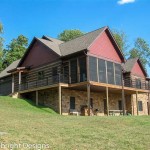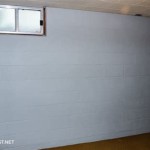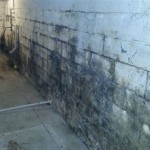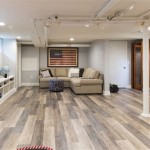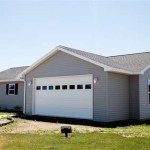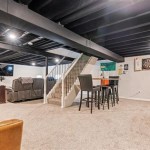Finished Basement With Cinder Block Walls: Essential Aspects to Consider
Cinder block walls are a common feature in many basements, providing structural support and durability. However, if you're planning to finish your basement, it's crucial to address these walls to create a comfortable and functional living space. Here are some essential aspects to consider when dealing with cinder block walls in a finished basement:
Sealing and Insulating
Cinder block walls are inherently porous, allowing moisture and cold to penetrate. To prevent these issues, it's crucial to seal the walls thoroughly. Applying a waterproof sealant or epoxy paint can block moisture absorption. Additionally, consider insulating the walls with rigid foam boards or spray foam to minimize heat loss and improve energy efficiency.
Framing and Paneling
Once the walls are sealed and insulated, you can frame them out to create a more finished look. This typically involves installing studs and drywall, which can be secured to the cinder blocks using masonry nails or anchors. If desired, you can add paneling over the drywall for a decorative touch.
Hanging Fixtures and Shelving
Cinder block walls require special considerations when it comes to hanging fixtures and shelving. To ensure secure mounting, use specialized masonry anchors that are designed to hold in this material. These anchors come in various sizes and load capacities, so选择the appropriate ones for the weight of your items.
Ventilation and Moisture Control
In any finished basement, proper ventilation is essential to prevent moisture buildup and mold growth. Cinder block walls contribute to this issue due to their porous nature. To address this, install a dehumidifier or exhaust fan to circulate air and regulate humidity. Additionally, consider installing a sump pump if your basement is prone to flooding.
Aesthetics
While functionality is paramount, don't neglect the aesthetics of your cinder block walls. To conceal their industrial appearance, you can apply paint or decorative finishes such as faux stone or brick veneer. These options can enhance the visual appeal of your basement and make it feel more inviting.
Additional Considerations
Here are some additional factors to keep in mind:
- Electrical Wiring: Cinder block walls require special care when running electrical wiring. Consult a qualified electrician to ensure proper installation and safety.
- Plumbing: If you plan on installing plumbing fixtures, be aware that cinder blocks may require additional modifications or specialized fittings.
- Height Restrictions: Cinder block walls can reduce the available ceiling height in your basement. Consider this factor when planning your layout and furnishings.
By addressing these essential aspects, you can transform your cinder block basement walls into a comfortable, functional, and visually appealing living space. Remember, careful planning, proper sealing, and attention to detail will help you create a basement that meets your needs and exceeds your expectations.

Painted Concrete Block Basement Simple But Nice Cinder Walls Painting Remodeling

Finished Basement Remodel Cinderblock Walls Painted With White Dry Loc Open Ceiling Joists To Keep The Inspiration Makeover Design

How To Finish Basement Walls Hgtv

10 Ways To Cover Concrete Walls In A Basement Finish

Finishing Basement Walls Without Drywall Options And Alternatives
.jpg?strip=all)
Before After Painted Cinderblock Walls Dream Green Diy

10 Ways To Cover Concrete Walls In A Basement Finish

Concrete Block Walls Cinder Basement Remodeling

Semi Finished Basement Painted Cinderblock Walls Finishing Interior Design Living Room Designs

Finishing Basement Walls Without Drywall Options And Alternatives
See Also

